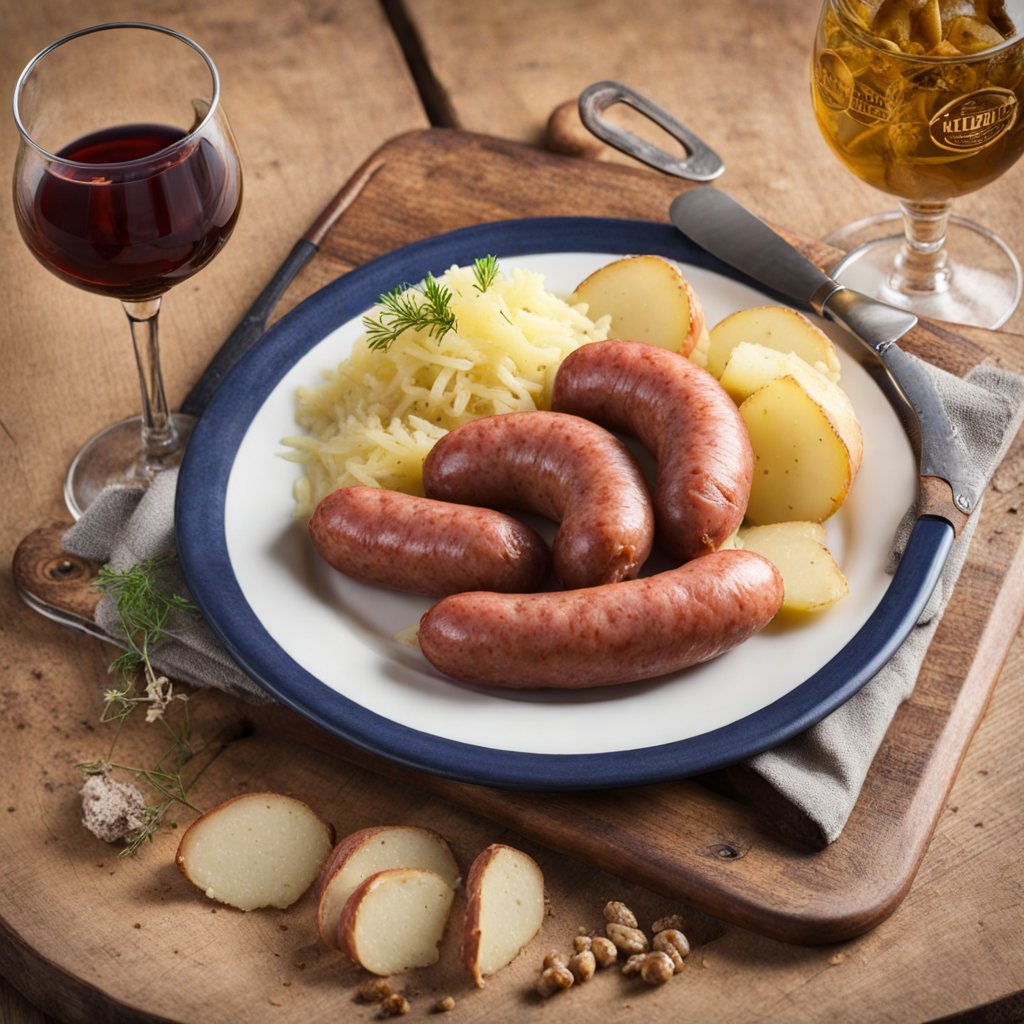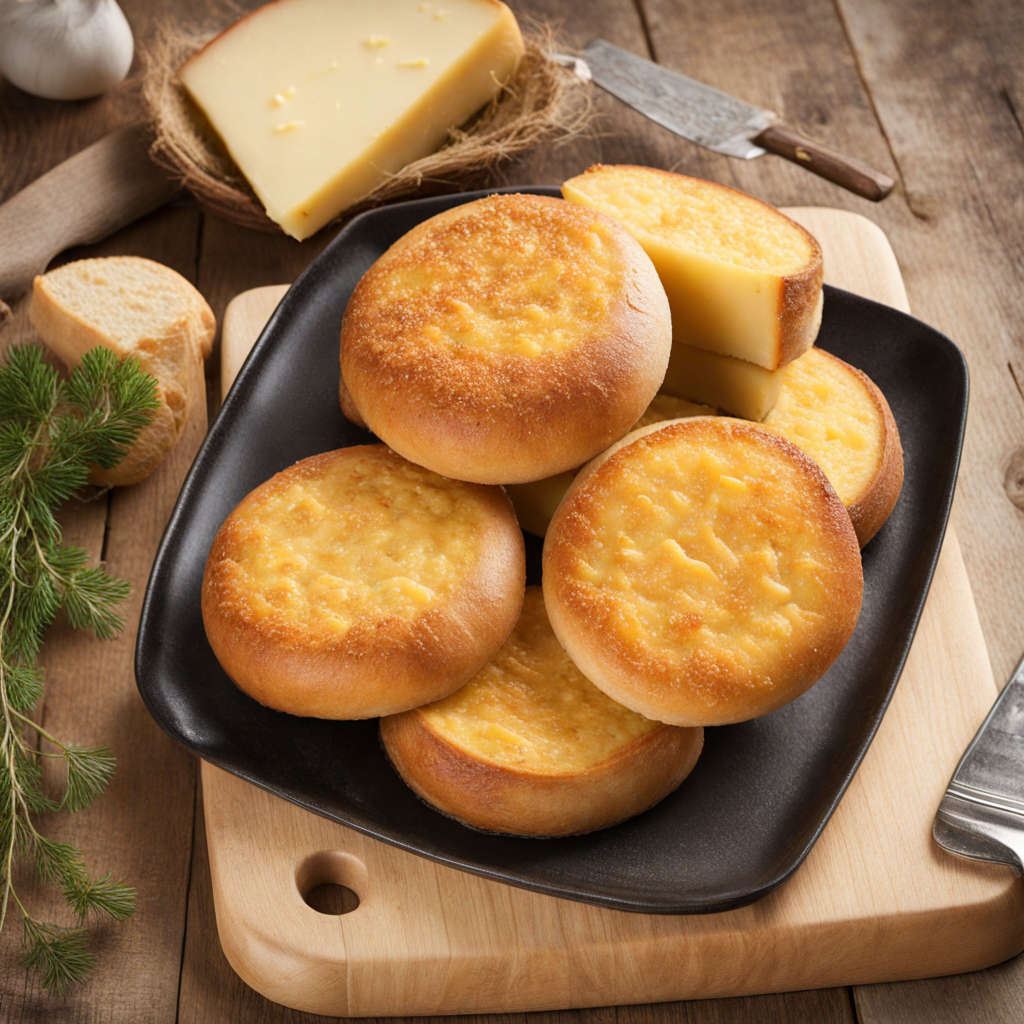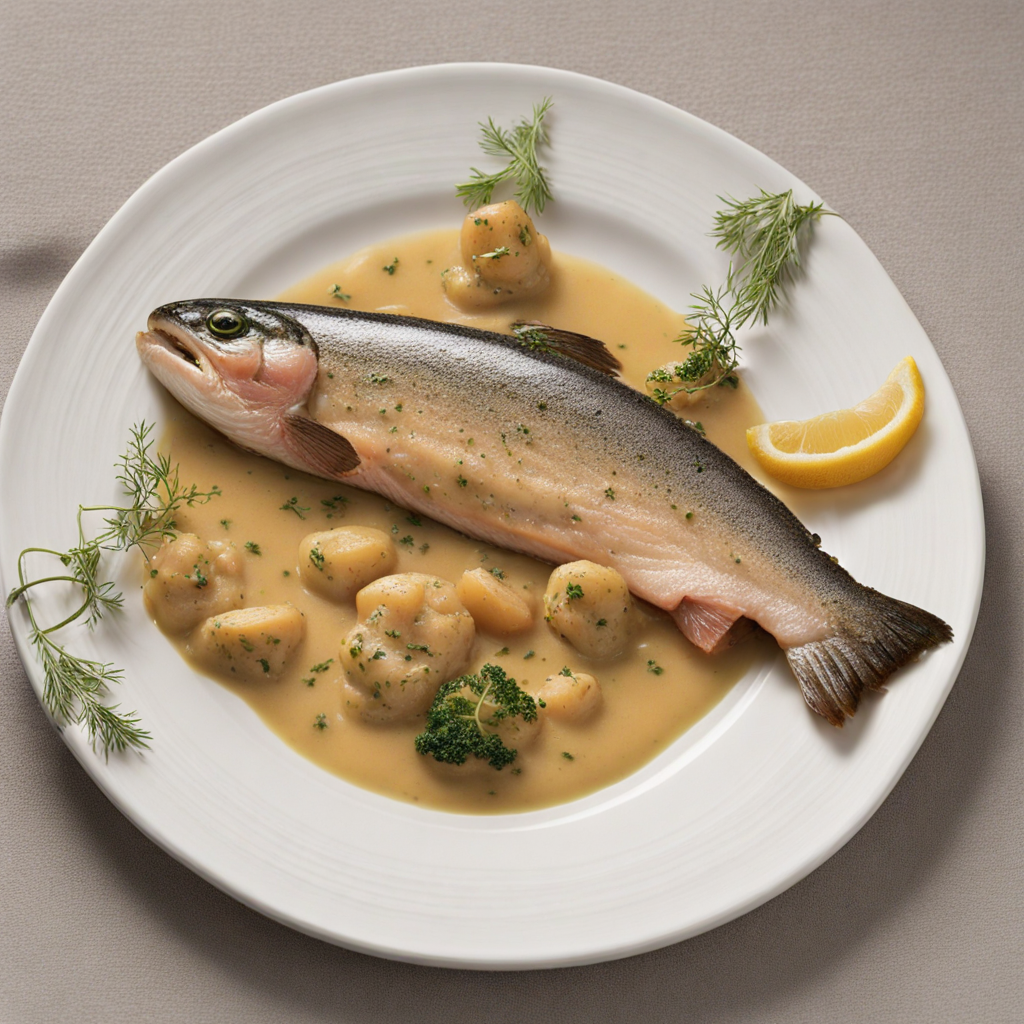Mettwurst
Mettwurst is a traditional Luxembourgish sausage that embodies the rich flavors and culinary heritage of the region. This semi-dry, cured sausage is typically made from finely minced pork, seasoned with a blend of spices that may include garlic, pepper, and various herbs. The meat is then stuffed into natural casings, giving it a rustic appearance and a satisfying bite. The curing process not only enhances the flavor but also contributes to a unique texture that is both tender and slightly chewy, making it a delightful addition to any charcuterie board or enjoyed on its own as a snack. One of the most distinctive features of Mettwurst is its smoky aroma, often achieved through the cold smoking technique, which infuses the sausage with a deep, savory essence. This flavor profile pairs beautifully with crusty bread, pickles, and a variety of cheeses, allowing for an array of delicious combinations. Mettwurst can also be incorporated into various dishes, such as stews or pasta, where its robust flavor can elevate the meal to new heights. The versatility of Mettwurst makes it a favorite among locals and visitors alike, as it can be enjoyed in both casual and more formal dining settings. For those looking to explore Mettwurst, it's essential to seek out artisanal producers who prioritize quality ingredients and traditional methods. Sampling this sausage offers a true taste of Luxembourg's culinary culture, where time-honored recipes meet modern palates. Whether enjoyed at a festive gathering or as part of a cozy meal at home, Mettwurst invites food enthusiasts to indulge in a unique and flavorful experience that is sure to leave a lasting impression.
How It Became This Dish
Mettwurst: The Savory Legacy of Luxembourg Mettwurst, a type of cured sausage hailing from the region of Luxembourg, is more than just a culinary delight; it embodies the rich cultural tapestry and agricultural heritage of this small European nation. With its roots deeply entrenched in the rural traditions of Central Europe, Mettwurst has evolved over centuries, reflecting changes in society, agriculture, and culinary practices. #### Origins of Mettwurst The name "Mettwurst" is derived from the German word "Met," which refers to raw minced meat. Traditionally, Mettwurst was made from finely ground pork, seasoned with a variety of spices, and often smoked or air-dried. The origins of this sausage can be traced back to the medieval era when preservation of meat was crucial for survival during long winters. Before refrigeration became commonplace, methods such as salting, curing, and smoking were vital techniques used to ensure meat could be stored for extended periods. In Luxembourg, as in many parts of Europe, the practice of sausage-making was a communal affair, often involving families and neighbors. Each household would have its own recipe, passed down through generations, incorporating locally-sourced spices and meats. The use of pork was particularly significant, as pigs were commonly raised on farms, making them readily available for the production of Mettwurst. #### Cultural Significance Mettwurst holds a special place in Luxembourgish culture, often serving as a symbol of national identity and culinary pride. It is frequently enjoyed as part of the traditional Luxembourgish breakfast, served alongside crusty bread, pickles, and cheese. In many households, Mettwurst is not merely an ingredient; it is a centerpiece for gatherings and celebrations, reflecting the importance of food as a means of bringing people together. Beyond its role in everyday meals, Mettwurst is also associated with local fairs and festivals. In rural communities, the autumn months would often see families coming together to prepare large batches of Mettwurst, a practice known as "Wurstfest" or sausage festival. This communal event is steeped in tradition, where families would gather to socialize, share stories, and enjoy the fruits of their labor. The process of making Mettwurst itself became a rite of passage for many young people, teaching them the skills of butchery and sausage-making that were integral to their heritage. #### Development Over Time As Luxembourg moved into the 19th and 20th centuries, the production of Mettwurst began to change, influenced by industrialization and the advent of modern food processing technologies. While traditional methods remained popular, mass production methods made Mettwurst more accessible to a broader audience. This transition brought with it both advantages and challenges; while more people could enjoy Mettwurst, concerns about quality and authenticity emerged. During the post-World War II period, as Luxembourg experienced economic growth and modernization, the country's culinary landscape began to shift. Mettwurst, which had once been a staple of rural life, started to gain recognition beyond national borders. Luxembourg’s growing population, alongside an influx of foreign workers, brought new influences that would begin to shape local cuisine. In the late 20th century, Mettwurst also began appearing in gourmet food markets and restaurants, showcasing its versatility. Chefs started experimenting with various types of meats, including beef and game, and innovative flavor combinations, incorporating herbs, spices, and even local wines. This evolution led to a renaissance of interest in traditional foods, with many chefs and artisans aiming to revive authentic recipes and practices. #### Modern Day Mettwurst Today, Mettwurst is celebrated not only in Luxembourg but also in neighboring regions such as Germany and Belgium, where similar sausages exist, each with slight variations in preparation and seasoning. The growth of the European Union and the globalization of food culture have allowed Mettwurst to find its place in international cuisine, often featured in charcuterie boards and gourmet sandwiches. Moreover, the rise of the "slow food" movement has encouraged a resurgence of interest in traditional, artisanal food production. Many small-scale producers in Luxembourg have dedicated themselves to preserving the craft of Mettwurst making, emphasizing organic ingredients and sustainable practices. Farmers' markets and local food festivals have become platforms for these artisans to showcase their products, allowing consumers to connect with the origins of their food. #### Conclusion Mettwurst is not just a sausage; it is a culinary symbol of Luxembourg's history, culture, and community. From its humble beginnings as a method of preserving meat to its modern-day status as a gourmet delicacy, Mettwurst encapsulates the evolution of food practices over time. As Luxembourg continues to embrace its culinary heritage, Mettwurst stands as a testament to the enduring significance of traditional foods in shaping cultural identity. Whether enjoyed in a rustic farmhouse or a trendy urban café, Mettwurst remains a beloved food that connects generations, celebrates local agriculture, and reflects the changing landscape of Luxembourgish cuisine. As it adapts to contemporary tastes while honoring its roots, Mettwurst will undoubtedly continue to play a vital role in Luxembourg’s gastronomic narrative for years to come.
You may like
Discover local flavors from Luxembourg







